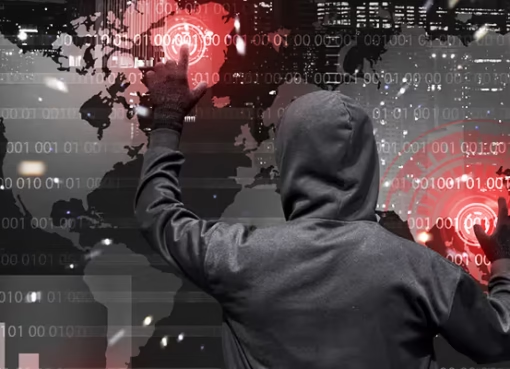What Are the Key Challenges in Cybersecurity Today?

In an increasingly interconnected world, cybersecurity has become one of the most pressing concerns for businesses, governments, and individuals alike. The digital landscape has created new opportunities for innovation, but it has also exposed organizations to a wide range of risks and vulnerabilities. Cybersecurity is no longer just an IT issue—it is a critical component of an organization’s overall strategy and a top priority for leaders at all levels. As cyber threats continue to evolve, organizations must adapt to new challenges and constantly refine their security measures to stay ahead of attackers.
This article will explore the key challenges in cybersecurity today, examining the factors that contribute to the growing complexity of cybersecurity threats, and offering insights into how businesses can address these challenges to protect their digital assets and sensitive information.
1. The Growing Sophistication of Cyber Threats
Cybercriminals and hackers are becoming increasingly sophisticated in their methods. They no longer rely solely on basic tactics like phishing emails or brute-force attacks. Modern cyber threats are highly sophisticated, often using artificial intelligence (AI), machine learning, and advanced malware to exploit vulnerabilities in systems. These types of attacks are harder to detect and mitigate, making it difficult for organizations to respond quickly and effectively.
Example: A well-known example of this evolving sophistication is ransomware attacks, where hackers encrypt a victim’s files and demand a ransom in exchange for the decryption key. Some advanced ransomware attacks are now designed to bypass traditional security measures and spread across networks before being detected.
Impact: As threats become more advanced, traditional security measures such as firewalls, antivirus software, and intrusion detection systems are no longer sufficient. Organizations must adopt more proactive and sophisticated security strategies, including AI-driven threat detection, continuous monitoring, and advanced encryption protocols.
2. The Explosion of IoT Devices
The rise of the Internet of Things (IoT) has created a new set of vulnerabilities for organizations. IoT devices, which include everything from smart thermostats and security cameras to connected medical devices, are becoming increasingly widespread in both consumer and enterprise environments. However, many IoT devices are not built with strong security measures, making them prime targets for cyber attackers.
Example: In 2016, the Mirai botnet attack took advantage of insecure IoT devices like cameras and routers to launch one of the largest distributed denial-of-service (DDoS) attacks in history, taking down major websites and services.
Impact: The proliferation of IoT devices increases the attack surface for organizations, as each connected device is a potential entry point for cybercriminals. Businesses must implement strong security practices, such as regular patching, network segmentation, and the use of device management systems to mitigate the risks associated with IoT devices.
3. The Increasing Complexity of Regulatory Compliance
Governments and regulatory bodies around the world are increasingly focused on cybersecurity and data protection. Laws such as the European Union’s General Data Protection Regulation (GDPR) and the California Consumer Privacy Act (CCPA) have set high standards for how organizations must handle personal data and maintain security. Failure to comply with these regulations can result in heavy fines, reputational damage, and legal consequences.
Example: In 2020, British Airways was fined £20 million by the UK Information Commissioner’s Office (ICO) for a data breach that exposed the personal information of 400,000 customers, which violated GDPR regulations.
Impact: Regulatory compliance is becoming more complex and costly for organizations, especially those that operate across multiple jurisdictions. Staying compliant requires ongoing investment in cybersecurity infrastructure, as well as the expertise to navigate the constantly changing landscape of data protection laws.
4. The Talent Shortage in Cybersecurity
One of the biggest challenges facing the cybersecurity industry today is the shortage of skilled professionals. According to various reports, there are millions of unfilled cybersecurity jobs globally. This talent gap is exacerbated by the rapidly growing demand for cybersecurity experts as organizations recognize the increasing need to protect their digital infrastructure.
Example: In a 2020 report, (ISC)², a nonprofit association of cybersecurity professionals, estimated that the global shortage of cybersecurity professionals had reached 3.1 million.
Impact: The shortage of cybersecurity talent has made it difficult for organizations to implement effective security strategies and manage their cybersecurity programs. Companies may struggle to recruit and retain qualified security professionals, leading to a lack of expertise in key areas such as threat detection, incident response, and compliance management.
5. Cybersecurity in the Remote Work Era
The COVID-19 pandemic accelerated the shift to remote work, and many businesses have continued to embrace flexible work arrangements. While remote work offers many benefits, it also introduces new cybersecurity challenges. Employees working outside the corporate network are often accessing sensitive data and applications from personal devices and unsecured home networks, creating new attack vectors for cybercriminals.
Example: In 2020, there was a significant increase in cyberattacks targeting remote workers, with phishing campaigns and malware distribution rising in line with the growth of remote work.
Impact: To secure a remote workforce, businesses must invest in secure virtual private networks (VPNs), multi-factor authentication (MFA), and endpoint security solutions. Educating employees about cybersecurity best practices is also crucial to prevent attacks that exploit human error, such as phishing and social engineering.
6. Supply Chain Vulnerabilities
In an increasingly interconnected world, supply chains have become a prime target for cybercriminals. Cyberattacks on supply chain partners can have far-reaching consequences, as organizations may be unaware of the vulnerabilities in their third-party vendors’ systems. A well-known example of this is the 2020 SolarWinds cyberattack, where hackers breached the software provider’s network and used it as a stepping stone to infiltrate the networks of thousands of organizations, including government agencies and Fortune 500 companies.
Impact: Businesses must ensure that their supply chain partners have robust cybersecurity practices in place. This includes regularly auditing third-party vendors, implementing strict access controls, and sharing threat intelligence to detect and mitigate risks before they affect the broader supply chain.
7. The Rise of Nation-State Cyber Attacks
In addition to cybercriminals, nation-states are increasingly using cyberattacks as a tool of geopolitical strategy. Nation-state actors have the resources and expertise to launch highly sophisticated and targeted attacks, often aimed at stealing intellectual property, disrupting critical infrastructure, or influencing political outcomes.
Example: The 2016 cyberattack on the Democratic National Committee (DNC) during the U.S. presidential election is one of the most notable examples of nation-state cyberattacks aimed at influencing political events.
Impact: Nation-state cyberattacks present a unique challenge because they are often highly organized and can be difficult to attribute. Governments and businesses must collaborate to share intelligence, improve threat detection, and develop more effective defenses against these types of attacks.
7 FAQs on Key Challenges in Cybersecurity
- What is the biggest challenge in cybersecurity today?
- The growing sophistication of cyber threats, including advanced ransomware and nation-state cyberattacks, is one of the biggest challenges organizations face.
- How can organizations protect themselves against cyber threats?
- Organizations can implement multi-layered security measures, including AI-driven threat detection, employee training, regular patching, and strong encryption.
- Why are IoT devices a security concern?
- Many IoT devices are not built with robust security features, making them easy targets for cybercriminals. These devices can be exploited to gain access to larger networks.
- How can businesses manage compliance with cybersecurity regulations?
- Businesses should stay updated on relevant regulations, invest in data protection measures, and hire experts who can help navigate complex legal requirements.
- How can companies address the cybersecurity talent shortage?
- Companies can invest in employee training, partner with educational institutions to create a pipeline of talent, and explore outsourcing some cybersecurity functions.
- What security measures should remote workers follow?
- Remote workers should use VPNs, enable multi-factor authentication, avoid using public Wi-Fi for work purposes, and regularly update software.
- How can businesses secure their supply chains?
- Businesses should audit their third-party vendors, enforce strong access controls, and share threat intelligence to mitigate supply chain risks.
Conclusion
Cybersecurity is an ongoing challenge for organizations of all sizes and industries. As cyber threats become more sophisticated and the digital landscape continues to evolve, businesses must adopt proactive strategies to protect their assets and data. By addressing the key challenges in cybersecurity, including the growing complexity of cyber threats, IoT vulnerabilities, regulatory compliance, talent shortages, remote work risks, supply chain vulnerabilities, and nation-state cyberattacks, organizations can better safeguard themselves against the ever-present threat of cybercrime.
Key Takeaways:
- The sophistication of cyber threats continues to rise, making it essential for businesses to adopt advanced security measures.
- The proliferation of IoT devices and the shift to remote work have expanded the attack surface, creating new security challenges.
- Regulatory compliance, the cybersecurity talent shortage, and supply chain vulnerabilities are critical issues that businesses must address.
- Continuous investment in cybersecurity, employee training, and collaboration with partners and government agencies are key to mitigating cybersecurity risks and building resilience in the face of evolving threats.




Leave a Comment